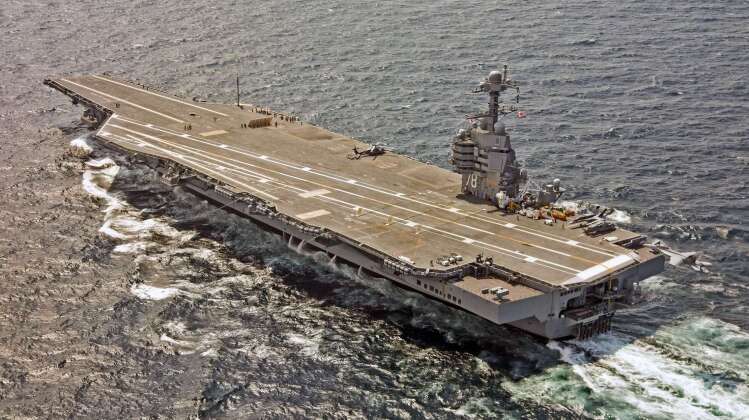On June 17 the first Type 003 Class supercarrier was launched at the Jiangnan Shipyard in Shanghai following weeks of anticipation, with the warship estimated to displace between 85,000 and 100,000 tons being by far the largest at sea outside the United States Navy. The ship, named Fujian at the launch ceremony after the southeastern province, is the third Chinese carrier capable of accommodating fixed wing aircraft. It follows the warships Liaoning and Shandong based on the Soviet Kuznetsov Class design, and is the sixth Chinese carrier overall with three more Type 075 Class assault carriers deploying rotary wing aircraft also being deployed. Construction is reported to have begun in March 2015, around the same time that the 67,000 ton carrier Shandong was laid down in the sister shipyard at Dalian, although the larger carrier took over twice as long to complete with the Shandong launching just two years later. The fact that the Shandong’s design was closely derived from those of two existing carriers, the Liaoning and the Russian carrier Admiral Kuznetsov, as well as the lack of complex features seen on the Fujian, are thought to have made its construction far simpler.

The Fujian saw its modules moved to dry dock for construction in July 2020, with catapult launch systems and the superstructure being observable by mid-2021. Where the Shandong took 32 months after launch to be commissioned, it is expected that the Fujian may take a similar or longer time. The ship introduces capabilities never before seen outside American carrier programs, with its flat deck and lack of the ski jump launch system seen on prior ships accommodating an electromagnetic catapult launch system expected to revolutionise the capabilities of its air wing. The use of such a launch system was first announced in 2013, and allows much heavier aircraft with more fuel and munitions to operate from its deck. Other than the American Gerald Ford Class carriers which use the same kind of launch system, the Type 003 is expected to have a significant advantage over all other carrier classes in terms of what its air wing is capable of. Designed with conventional rather than nuclear propulsion, the ship is speculated to be intended for operations in the Pacific possibly beyond East Asia into the Eastern Pacific. Its effective operations will largely be facilitated by advances the Chinese defence sector has made in the sophistication of its fighter aircraft, drones, destroyers, logistics ships and a range of other assets.

It remains uncertain whether more ships of the Type 003 Class will be built, or whether the Navy will consider ships with nuclear propulsion systems and possibly larger hulls when looking to further expand its carrier fleet. The ship’s air wing is expected to include not only enhanced J-15B ‘4++ generation’ fighters, but also KJ-600 airborne early warning aircraft, stealth fighters based on the FC-31 design, J-15D electronic attack jets, and a range of drones among other assets. The Fujian’s launch comes as the Navy has used its existing carriers increasingly actively, including simultaneous operations in the Pacific by two carriers in December 2021 and the launch of over 100 sorties by the Liaoning near U.S. bases in Okinawa in May 2022. An announcement of more frequent carrier operations was made in May 2021. The Fujian is expected to provide valuable experience in operating a supercarrier and its air wing, with the Navy potentially waiting to learn from such operations before laying down its fourth aircraft carrier.
